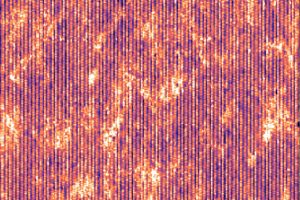Superconductivity is a phase of matter characterized by the absence of electrical resistance and the expulsion of external magnetic field from the bulk material. This phenomena is driven by the macroscopic quantum coherence of Cooper pairs which are bound states of two electrons. Another state of matter with remarkable properties are topological materials which are hosting robust quasiparticle states at their edges, surfaces, or defects, protected by topological invariants. Topological superconductors are a class of quantum materials that combine both properties. Unlike conventional superconductors, they are predicted to host exotic quasiparticles such as Majorana modes zero-energy excitations that are particularly promising for quantum computing, due to their non-Abelian statistics and topological protection. Although no material has been definitely proven to exhibit intrinsic topological superconductivity, the uranium-based compound UTe$_2$, discovered in 2018 to host an exotic superconducting state below 1.6 K, is one of the most promising candidates for the physical realization of this property.
Scanning Tunneling Microscopy (STM) is a powerful experimental technique for investigating the topological nature of the superconducting state in UTe$_2$. STM offers atomic-scale spatial resolution (10^-10 m) and provides direct access to the local electronic structure at the surface of any material. As STM is inherently surface-sensitive, it is especially well-suited for detecting topological states that are localized at the surface. In practice, STM can reveal information about the superconducting state by analyzing interference patterns generated by quasiparticles scattering off surface impurities. In this context, disorder typically seen as a drawback becomes a powerful diagnostic tool, providing insight into the nature of the quasiparticles and the underlying superconducting state.

The group of J.C. Séamus Davis at the University of Oxford has recently performed high-precision STM measurements on the cleaved surface of UTe$_2$ at ultra-low temperatures ($T = 300$ mK). The experimental results on the electronic interference patterns were matched with numerical simulations performed by a research team at the Institut de Physique Théorique du CEA Saclay (IPhT), led by Cristina Bena and Catherine Pépin, in collaboration with Aix-Marseille University. Together, experimental observations and theoretical analysis have provided strong evidence for a topological superconducting state in UTe$_2$. These results open the door for new experimental and theoretical investigations aimed at a more complete understanding of the microscopic conditions required to achieve a topological superconducting state.


